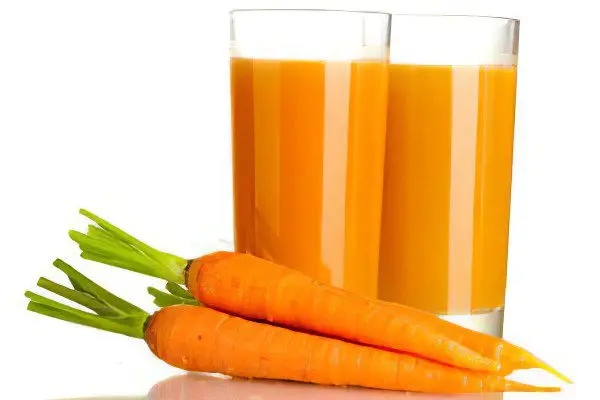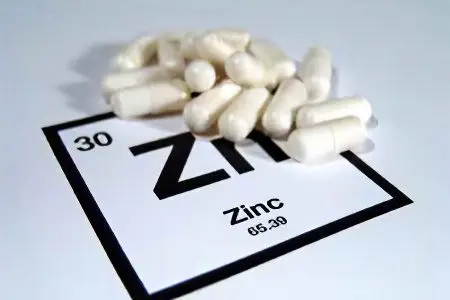Contents
Beta Carotene (Vitamin A)

A substance useful for human vision, contained in products of animal and non-animal origin, is beta-carotene. It is a powerful immunomodulator and antioxidant.
Thanks to the intake of beta-carotene with food in the doses necessary for a person, it will be possible to restore vision, normalize the functioning of the retina, get rid of dry eye syndrome and increased tearing caused by a lack of vitamins. In addition, beta-carotene reduces the risk of developing cataracts and is a preventive measure in the progression of degenerative diseases of the retina.
You can find it in many products, however, the champion is:
Red palm oil is the world record holder according to the content of beta-carotene, 5 mg in 1 teaspoon!
Among greens, sorrel (7 mg) and parsley (5,7 mg) come out on top, followed by watercress (5,6 mg), then spinach and celery (4,5 mg), almost half as much as in green onions. (2 mg), garlic (2,4 mg) and lettuce (1,8 mg). There is very little of it in dill (1 mg).
Berries are not deprived of the substance that is beneficial to human vision: most of all it can be obtained by eating sea buckthorn (7 mg), wild rose (5 mg) and wild garlic (4,2 mg), it is eaten in mountain ash (1,2 mg), not apricot (1,6 mg) will be less useful, cherry and plum (0,1 mg) close this list.
As for fruits, both mangoes (2,9 mg) and peaches (0,5 mg) are beneficial.
Among the vegetable series, carrots (9 mg) are in the lead, followed by red pepper (2 mg), not bitter green (1,2), pumpkin (1,5), tomatoes (1,2). Separately, broccoli (1,5), Brussels sprouts (0,3 mg) and red cabbage (0,3 mg), as well as potatoes (0,02 mg) can be distinguished.
Legumes do not differ in its high content of only 1,4 mg of a useful substance can be found in green peas and beans.
Quite a lot of it in melon (2 mg) and much less in watermelon (0,1 mg).
Among the products of animal origin, the leader is the liver (1 mg), then comes butter and sour cream 0,2 and 0,15 mg, respectively, and at the end is cottage cheese – 0,06 mg.
When calculating the daily requirement of this substance, it is important to take into account the fact that it is not completely absorbed from food, therefore, if it is deficient, it is worth consuming large volumes of food.
Lutein

The pigment carotenoid is lutein, it can be found in algae, some microorganisms, in plants and flowers. A person needs to get this substance from food, since the body is not able to produce it on its own. Lutein is needed primarily for the eyes, since there is 10 times more lutein in the retina than in blood plasma. Regular intake of it in food allows you to maintain eye health, improve visual acuity.
The yellow spot, located in the center of the retina, has its color precisely because of lutein. You can meet its derivative zeaxanin in the ciliary body, in the choroid of the eye, in the lens and iris. Due to the presence of zeaxanin, the eye filters sunlight, or rather part of it, until it hits the photoreceptors. This helps to increase visual acuity, allows you to see and examine even the smallest details of the image more clearly.
Another useful property of lutein for the eyes is that it acts as a protector of the organ of vision from free radicals, preventing their destructive effect on the retina. The higher the concentration of lutein, the lower the risk of visual impairment due to damage to the retina. To replenish the reserves, the body needs to receive it with products in the amount of 5 mg per day.
To do this, it is useful to eat (based on 100 grams per mcg):
Greens such as spinach (11607) and celery (229).
Vegetables, in particular – pumpkin (8173) and carrots (335).
Green peas (1292) and other legumes (616).
Fruits, among which persimmon comes first (346). It is less in tangerines and oranges (131 and 113), as well as in peaches (51).
For eye health, don’t forget corn (356).
From animal products, hen’s egg yolk can be consumed for this purpose (32).
Why is lutein so important?
Replenishing lutein is so important primarily because of the thinning of the earth’s ozone layer and the increased attacks of ultraviolet radiation, which adversely affect vision.
Do not benefit from prolonged work at the computer, daily many hours of watching TV. All this leads to the development of age-related macular degeneration. If earlier it affected mainly the elderly, now young people also suffer from this pathology. Therefore, it is so important to consume lutein in sufficient quantities, because it is he who protects the retina from dystrophic lesions.
Vitamin E
If we consider the benefits of various substances for vision, then it is impossible to lose sight of vitamin E. It has a significant impact on the development of such serious pathologies as macular degeneration and cataracts, protecting the eyes from irreversible age-related changes.
The useful quality of this vitamin lies in the fact that it maintains the state of blood vessels, including small ones, penetrating the eyeball and providing its nutrition.
Product List | In mg per 100 g |
Wheat germ oil | 45 mg per 1 tablespoon |
Soybean oil | 24 mg per 1 tablespoon |
Corn oil | 20 mg per 1 tablespoon |
Sunflower oil | 12 mg per 1 tablespoon |
Almonds | 24 mg |
Funduk | 20,4 |
Peanut nuts | 10, 1 |
Fistashki | 6 |
Cashew | 5,7 |
Dried | 5,5 |
Eel (sea fish) and sea buckthorn (berries) | 5 |
Rosehip (berries) | 3,8 |
Wheat | 3,2 |
Walnut walnut | 2,6 |
Spinach (greens) | 2,5 |
Squid – sea fish | 2,2 |
Viburnum berry and sorrel | 2 |
Salmon, pike perch (sea fish meat) and prunes, like dried fruits | 1,8 |
Zinc

In order to maintain the organs of vision in proper condition, it is necessary to consume zinc daily.
Another merit of zinc is the help of vitamin A in absorption. With its lack of vision gradually begins to decline.
Therefore, to get zinc from food, it is important to include foods such as (amount in mg per 100 g):
Stewed beef meat (9,5) and meat products in the form of fried veal (16) and lamb liver (5,9). Offal such as boiled chicken hearts (7,3) and beef tongue (4,8) are useful.
Do not ignore the seafood – these are oysters (60) and anchovies (3,5), as well as boiled eel (12). Salmon will be useful as canned food (0,9).
Such a delicacy as nuts and dried fruits are rich in this trace element. It is important to consume pine nuts (6,5), Brazilian (4), walnuts (2,7), forest (1,9), pistachio nuts (1,4). Don’t forget pecans (5,3), almonds (2,2), coconut (2) and cashew nuts (2,1). Somewhat lower zinc content in dried apricots (0,75) and prunes (0,45).
Fruits and vegetables – kohlrabi (3,5) and radishes, boiled carrots, cauliflower and avocados (0,3 mg each) contain this trace element in a small amount.
It is important to consume cereals and legumes – wheat bran (16), lentils (3,8), peas (3,3), beans (1,4), oats (0,5), corn (0,5), rice (0,45 .7,8). Important are sesame seeds (8,1) and poppy seeds (7,5), pumpkin (5,6) and sunflower (5,5), flax (XNUMX).
Do not ignore animal products, such as egg yolk (3,9), yeast (8), milk (0,4).
White mushrooms (1,5), nettle (1) and green onions (0,4) contain a small amount of zinc.
Vitamin B9 (folic acid)
Folic acid has a positive effect on the organs of vision due to the fact that they receive good nutrition, due to the normal content of hemoglobin in the blood. By increasing the appetite of a person, folic acid increases the intake of vitamins and trace elements with food, thereby additionally supplying the eyes with the necessary substances. This is important for maintaining vision and preventing age-related changes.
In order to get it, it is important to consume the following foods:
Product List | In mg per 100 g |
Peanuts and beef and chicken liver | 240 |
Pig liver | 225 |
Lentil | 180 |
Boiled beans | 90 |
Fresh spinach greens | 85 |
Broccoli | 79 |
Avocado | 90 |
Walnut | 77 |
Steamed Asparagus | 79 per serving |
Salad | 48 |
Tomatoes | 45 |
Barley groats, porcini mushrooms, almonds (nuts) and wild garlic | 40 |
Horseradish | 37 |
Champignons (mushrooms) | 30 |
Leek | 32 |
Vitamin V6
All B vitamins must be included in your diet to maintain visual acuity. In particular, vitamin B6 contributes to the fact that a person will not suffer from conjunctivitis and inflammation of the optic nerve.
Pine nuts are the undisputed leader in the content of this useful vitamin. These small nucleoli contain 122 mg per 100 grams of product, which is 6120% of the daily requirement for a person. However, it is important to consume them in their raw form, as only 6 mg of vitamin B0,1 remains in dried nuts.
However, any cooking significantly reduces the level of this vitamin. So, if you subject the meat to heat treatment, then up to 70% of the vitamin will “leave” it, if you cook porridge, then 90% will evaporate. Preservation is also harmful, as it takes up to 80% of the vitamin and freezing deprives food by 70%.
Major Sources of Vitamin B6:
Products, 100 g | Vitamin B content6, mg |
beans | 0,9 |
Walnuts | 0,8 |
Parsley | 0,6 |
Sweet red pepper | 0,5 |
Bird | 0,5 |
Meat | 0,4 |
Fatty herring | 0,4 |
Potatoes | 0,3 |
Salad leaves | 0,18 |
Tresska | 0,17 |
Green pea | 0,17 |
White cabbage | 0,14 |
Chicken egg | 0,14 |
Curd | 0,11 |
Milk | 0,05 |
Vitamin V12
Taking an active part in the processes of hematopoiesis, vitamin B12 contributes to the saturation of the eyes with nutrients. If it is not enough, then the eyes begin to watery, get tired faster, dark circles form under them.
To do this, it is necessary to include in the diet (the amount is presented in mcg per 100 g):
Product List | In μg per 100 g |
Beef liver | 60 |
Pork liver | 30 |
Chicken liver | 16,5 |
Sea fish – mackerel | 12,5 |
Sardinы | 11 |
Rabbit meat | 4,3 |
Meat beef | 2,6 |
Sea bass | 2,4 |
Pork and lamb pulp | 2 |
Cod | 1,6 |
river carp | 1,5 |
Dutch cheese | 1,4 |
Crab | 1 |
chicken egg | 0,5 |
Cream | 0,4 |
grape seed extract
Grape seed extract contains such a useful substance as resveratrol. It is necessary for maintaining vision, as it acts as a powerful antioxidant, neutralizing radicals harmful to the eyes. Promotes a speedy recovery in inflammatory eye diseases, such as conjunctivitis, helps fight parasites in Demodex.
In order to obtain grape seed extract, you can use the following methods:
Buy a ready-made product at a pharmacy. You can choose it in the form of a biologically active food supplement.
Cook it yourself, for which you need to purchase fresh grapes and pass it through an auger juicer without pitting. In this way, you can get a fresh extract at home.
Blueberry berry extract
Bilberry extract is indispensable for vision, as it has the ability to:
Stimulate the regeneration of rhodopsin – the pigment of the retina.
Improves metabolic processes in the retina.
Increases the protective functions of the retina, increasing its resistance to disease.
Helps with problems such as myopia, astigmatism, farsightedness.
Protects the eyes when working at a computer, with other visual loads.
Bilberry extract can be used for all conditions that cause visual impairment. It is useful for both treatment and prevention.
Author of the article: Degtyareva Marina Vitalievna, ophthalmologist, ophthalmologist









